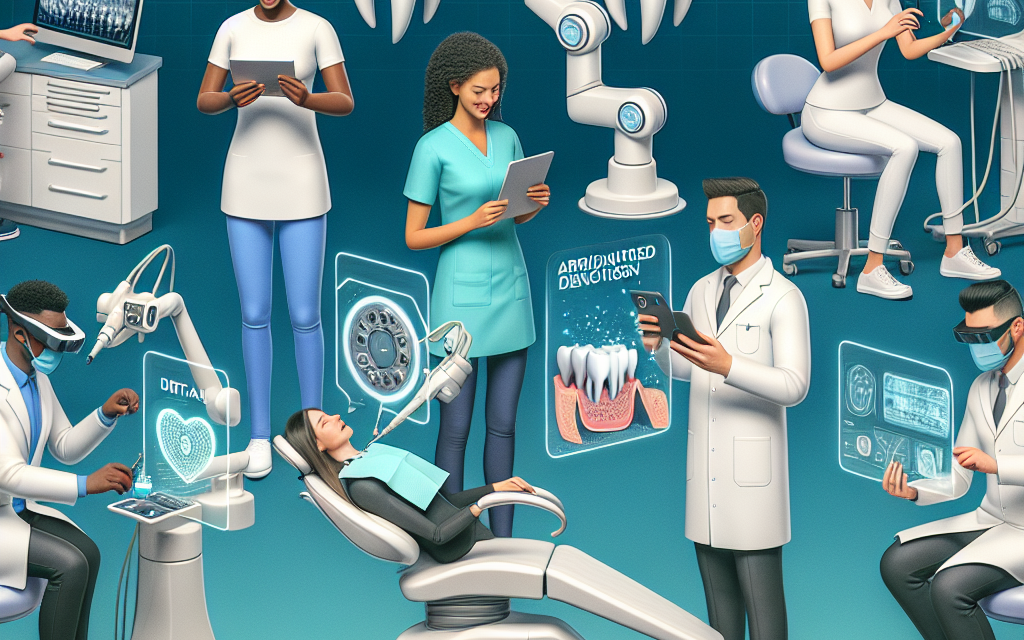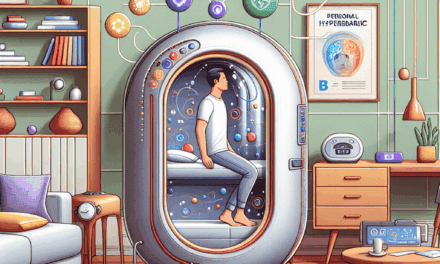5 Innovative Digital Tools Revolutionizing Modern Dentistry
The field of dentistry has undergone a significant transformation in recent years, driven by advancements in technology. Digital tools are not only enhancing the efficiency of dental practices but also improving patient outcomes and experiences. This article explores five innovative digital tools that are revolutionizing modern dentistry, providing insights into their applications, benefits, and real-world examples.
1. 3D Printing in Dentistry
3D printing technology has emerged as a game-changer in various industries, and dentistry is no exception. This technology allows for the rapid production of dental models, crowns, bridges, and even orthodontic devices, all tailored to the specific needs of individual patients.
One of the most significant advantages of 3D printing in dentistry is its ability to create highly accurate and customized dental products. Traditional methods often involve lengthy processes and the potential for human error. In contrast, 3D printing utilizes digital scans to produce precise replicas of a patient’s dental structure.
- Customization: 3D printing enables the creation of personalized dental solutions, such as aligners and prosthetics, that fit perfectly to the patient’s anatomy.
- Speed: The production time for dental appliances is significantly reduced, allowing for quicker turnaround times and improved patient satisfaction.
- Cost-Effectiveness: By reducing material waste and labor costs, 3D printing can lower the overall expenses associated with dental procedures.
For instance, a dental practice in California implemented 3D printing technology to produce custom aligners. The practice reported a 50% reduction in production time and a 30% decrease in costs compared to traditional methods. This not only improved their operational efficiency but also enhanced patient satisfaction due to faster treatment times.
Moreover, 3D printing is also being used for surgical guides, which assist dentists in performing complex procedures with greater accuracy. By providing a physical template based on a patient’s unique anatomy, these guides help ensure that implants and other dental devices are placed correctly, reducing the risk of complications.
2. Teledentistry: Bridging the Gap in Dental Care
Teledentistry has gained traction, especially in the wake of the COVID-19 pandemic, as it allows dental professionals to provide care remotely. This innovative approach utilizes digital communication tools to facilitate consultations, follow-ups, and even some diagnostic procedures without the need for in-person visits.
One of the primary benefits of teledentistry is its ability to increase access to dental care, particularly for patients in rural or underserved areas. Patients can connect with dental professionals from the comfort of their homes, reducing travel time and associated costs.
- Convenience: Patients can schedule virtual appointments at their convenience, making it easier to seek care without disrupting their daily routines.
- Cost Savings: Teledentistry can reduce overhead costs for dental practices, which can be passed on to patients in the form of lower fees.
- Increased Patient Engagement: Virtual consultations can encourage patients to take a more active role in their dental health, as they can easily communicate with their providers.
A case study from a dental clinic in Texas illustrates the effectiveness of teledentistry. The clinic implemented a teledentistry program during the pandemic, allowing patients to receive consultations and follow-up care remotely. As a result, they reported a 40% increase in patient engagement and a significant reduction in missed appointments.
While teledentistry is not a replacement for in-person visits, it serves as a valuable complement to traditional dental care. It can be particularly useful for routine check-ups, consultations for minor issues, and post-operative follow-ups, ensuring that patients receive timely care without unnecessary delays.
3. Digital Impressions: The Future of Dental Molding
Traditionally, creating dental impressions involved the use of messy materials that could be uncomfortable for patients. Digital impression technology has revolutionized this process by utilizing intraoral scanners to capture precise images of a patient’s teeth and gums.
Digital impressions offer several advantages over traditional methods:
- Comfort: Patients often find digital impressions more comfortable than traditional molds, which can cause gagging or discomfort.
- Accuracy: Digital scans provide highly accurate representations of a patient’s dental anatomy, reducing the likelihood of errors in the fabrication of crowns, bridges, and other restorations.
- Efficiency: The process of capturing digital impressions is quicker, allowing dental professionals to streamline their workflows and reduce chair time for patients.
A dental practice in New York adopted digital impression technology and reported a 60% reduction in the time spent on taking impressions. This not only improved patient comfort but also allowed the practice to see more patients in a day, ultimately increasing revenue.
Furthermore, digital impressions can be easily shared with dental laboratories, expediting the production of restorations. This seamless communication between dental practices and labs enhances collaboration and ensures that patients receive their dental appliances in a timely manner.
4. Artificial Intelligence in Diagnostics
Artificial intelligence (AI) is making significant strides in various fields, including healthcare. In dentistry, AI is being utilized to enhance diagnostic accuracy and improve treatment planning. AI algorithms can analyze dental images, such as X-rays and scans, to identify potential issues that may be missed by the human eye.
One of the key benefits of AI in dentistry is its ability to assist in early detection of dental diseases, such as cavities and periodontal disease. By analyzing patterns in dental images, AI can provide dentists with valuable insights that inform their treatment decisions.
- Enhanced Accuracy: AI algorithms can analyze vast amounts of data quickly, leading to more accurate diagnoses and treatment recommendations.
- Time Savings: By automating the analysis of dental images, AI can free up dentists’ time, allowing them to focus on patient care.
- Predictive Analytics: AI can help predict potential dental issues based on a patient’s history and current condition, enabling proactive treatment.
A notable example of AI in dentistry is the use of software that analyzes dental X-rays for signs of decay. A study published in the Journal of Dental Research found that AI algorithms achieved an accuracy rate of over 90% in detecting cavities, outperforming human dentists in some cases. This technology not only enhances diagnostic capabilities but also reduces the risk of misdiagnosis.
As AI continues to evolve, its applications in dentistry are expected to expand further, potentially transforming how dental professionals approach diagnostics and treatment planning.
5. Virtual Reality for Patient Education and Anxiety Management
Virtual reality (VR) is emerging as a powerful tool in dentistry, particularly for patient education and anxiety management. By immersing patients in a virtual environment, dental professionals can provide engaging educational experiences that help patients understand their treatment options and procedures.
One of the primary benefits of using VR in dentistry is its ability to reduce anxiety among patients. Many individuals experience fear or apprehension when visiting the dentist, which can lead to avoidance of necessary care. VR can help alleviate these fears by familiarizing patients with the dental environment and procedures in a non-threatening way.
- Enhanced Education: VR can provide interactive simulations that allow patients to visualize procedures, making it easier for them to understand what to expect.
- Anxiety Reduction: Immersive VR experiences can distract patients during procedures, helping to reduce feelings of anxiety and discomfort.
- Improved Compliance: By educating patients about their treatment options and the importance of oral health, VR can encourage better compliance with recommended care.
A dental clinic in Florida implemented a VR program for patients undergoing complex procedures. The clinic reported a significant decrease in anxiety levels among patients who used the VR headset during their appointments. Additionally, patients expressed greater satisfaction with their overall experience, leading to increased referrals and repeat visits.
As VR technology continues to advance, its applications in dentistry are likely to expand, offering new ways to enhance patient experiences and improve outcomes.
Conclusion
The integration of innovative digital tools in modern dentistry is transforming the way dental professionals deliver care. From 3D printing and teledentistry to digital impressions, AI diagnostics, and virtual reality, these technologies are enhancing efficiency, accuracy, and patient satisfaction.
As the dental industry continues to evolve, embracing these advancements will be crucial for practices looking to stay competitive and provide the best possible care to their patients. By leveraging these innovative tools, dental professionals can improve treatment outcomes, streamline workflows, and create a more positive experience for patients.
In summary, the five digital tools discussed in this article—3D printing, teledentistry, digital impressions, AI diagnostics, and virtual reality—are not just trends; they represent the future of dentistry. As these technologies become more widely adopted, they will undoubtedly shape the landscape of dental care for years to come.





